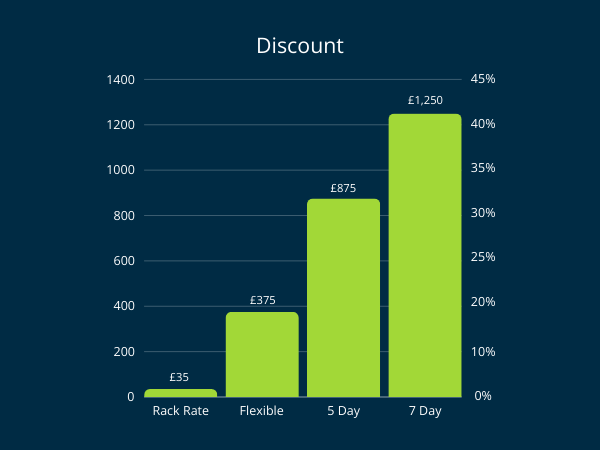


In the realm of golf club memberships, the concept of a flexible membership has gained traction as an alternative to the traditional seven-day membership. However, it is crucial to approach the pricing matrix and structure of flexible memberships with a strategic mindset, avoiding the notion that it is simply a discounted green fee product. This article delves into the intricacies of devising an effective pricing strategy and membership structure. We want to ensure mutual benefit for both the golf club and its potential flexible members.
Before diving into the mechanics of pricing and structuring, it is paramount to comprehend the motivations driving the implementation of a flexible membership option. Enumerating these reasons sets the groundwork for a well-thought-out strategy. A pivotal exercise involves stepping into the shoes of prospective flexible members and pondering over their rationale for joining.
Monetization of Underutilised Tee Times: The foremost objective is to maximise the utilisation of tee times that often go unoccupied. This entails driving traffic to these overlooked periods and capitalising on the revenue generated. However, the intention is not to solely focus on these times, as an exclusive membership category might be perceived as unattractive.
Balancing Pricing: Striking the right pricing balance is essential. While offering these tee times at excessively low rates through Pay and Play channels may devalue the overall pricing structure, it is imperative to maintain a level that neither undercuts nor deflates other pricing tiers.
Futuristic Recruitment: It is important to envision flexible members as potential future seven-day members. Statistics indicate that a significant percentage of flexible members eventually upgrade to full memberships. Thus, initial attractiveness and incentives are key factors for luring in new members.
Simplicity is Key: In crafting membership terms and conditions, simplicity is paramount. Unnecessarily intricate rules burden both the administration and members. Striving for straightforwardness benefits everyone involved.
Cash Flow Optimization: Flexible members contribute upfront capital, enhancing the club’s immediate cash flow and budgeting. The trade-off between upfront payment and associated discounts mirrors the full 7-day membership structure.
With a firm understanding of the club’s motivations, the spotlight shifts to the potential flexible members. Addressing their concerns and offering tangible value becomes pivotal.
Why Golfers Are Attracted to Flexible Memberships
Weighing Value: Prospective flexible members assess the value they receive for their upfront membership fee. Loyalty rewards and benefits vis-à-vis pay-and-play golfers are pivotal considerations.
Future Incentives: The potential to transition to higher-tier memberships in the future holds appeal. Structuring the membership matrix in a manner that highlights this progression can be a compelling factor.
Time Sensitivity: The booking period also impacts the decision-making process. If the offering is analogous to pay-and-play rates with the same booking window, the incentive to prepay diminishes. Flexibility and commitment should be delicately balanced.
Balancing Discounts and Benefits: Below is an illustrative membership pricing model, based on certain assumptions. The 7-day member plays once a week, while the 5-day member plays more frequently. The flexible member plays approximately once a month.

Discounts are derived from the rack green fee and equate to 40% for 7-day members, 30% for 5-day members, and 20% for flexible members.
A common misstep is setting the flexible membership matrix’s point value close to the pay-and-play rack rate. This erodes the inherent value of the membership. The key lies in aligning the average point value with the guest member rate, making full members ambassadors for attracting new members and guests.
Ensuring a diverse mix of attractive and less popular tee times within the matrix is pivotal. The goal is to make underutilised periods financially productive while offering value and flexibility to members.
Strategic Analysis: Costs, Profits, and Member Contributions: Comparing the costs of managing flexible memberships in-house versus outsourcing is essential. Omitting these costs can skew profitability estimates. Flexible members significantly contribute to the club’s financial health, impacting full membership subscription rates positively.
Furthermore, the benefit of allowing rollover of unused points bolsters the member’s profitability per round, enhancing the overall value proposition.
In conclusion, effective pricing and structuring of flexible memberships demand a comprehensive approach that aligns the golf club’s objectives with the desires of potential members.
Striking the right balance between pricing, incentives, simplicity, and flexibility can yield a win-win situation that enhances both the club’s revenue streams and member satisfaction.